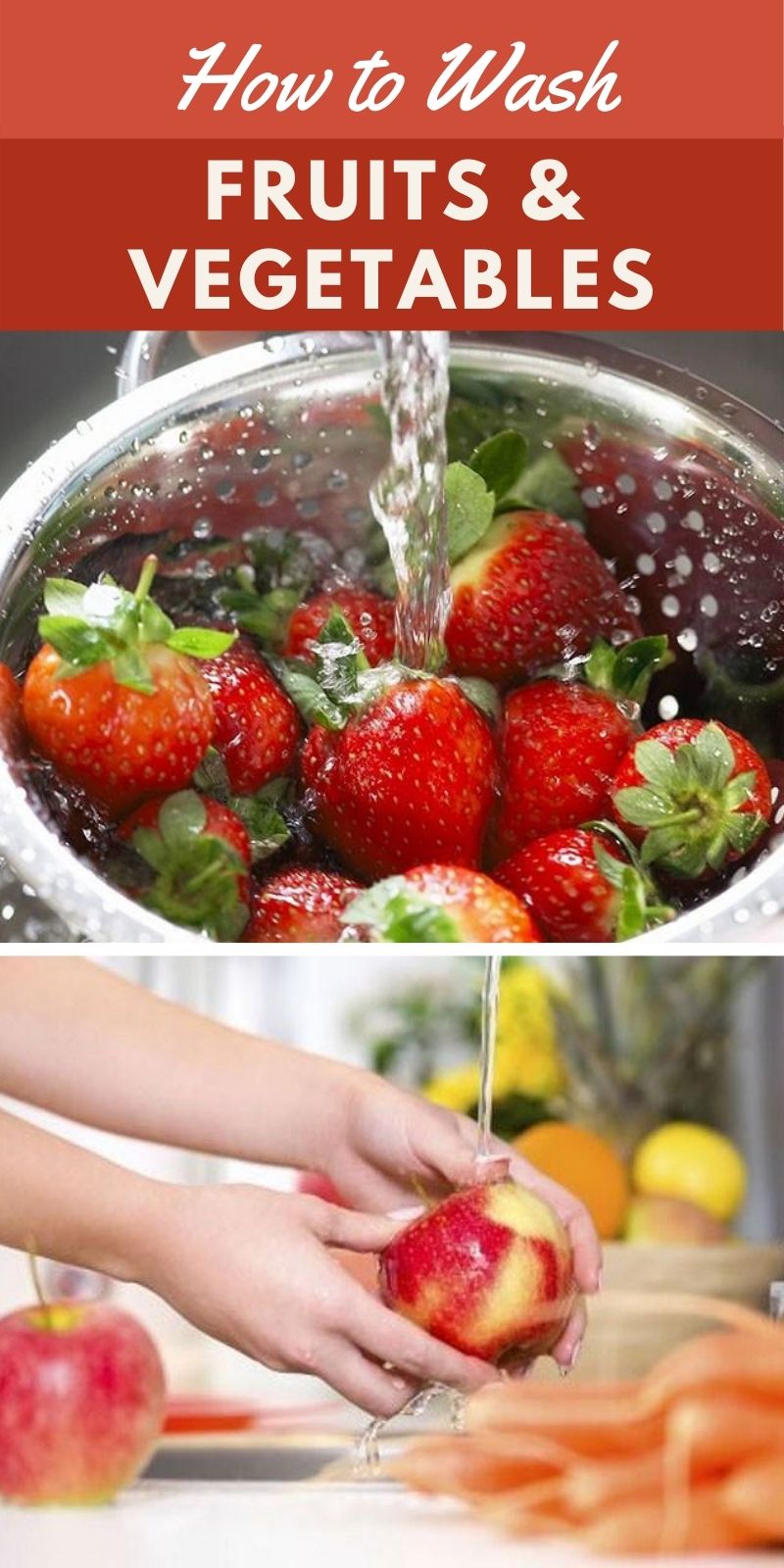How to Wash Fruits and Vegetables
You may have noticed an upsurge in the number of produce cleansing products on the market – and their DIY alternatives on the web. Honestly, growing up I don’t think we ever washed produce – but there are good reasons to do so.
Why Wash Fruits and Vegetables?
The only reason to wash produce (organic or conventionally-grown) is to remove germs and grime from people’s hands.
Whose hands?
The harvesters’, the packers’, the grocery store/farmer’s market guy, and any shopper who handled the produce but put it down without buying it. That’s a lot of hands! And a lot of germs.

This is why the Federal Drug Aministration (FDA) recommends all produce be washed before eating – even if you don’t plan to eat the peel or skin of the produce. (This is because the knife you use to remove the peel or cut the produce will touch the germs and transfer them to the part of the produce you will be eating.)
Do not wash produce before storing it. Washing can remove the fruit or vegetable’s natural protective coating, making it rot before it’s time.
What Washing Doesn’t Remove
Unfortunately, washing does not remove pesticides. It’s a myth that pesticides stay on the outer part of the produce. Instead, just like water, pesticides are absorbed into the produce. In fact, some pesticides are systematic – meaning they are designed to course through the produce.
If you are concerned about consuming pesticides, you’ll need to buy organic produce.
How to Wash Produce
The FDA recommends washing produce under running water, right before cutting it, cooking with it, or eating it. Use a scrub brush (a produce brush or nail brush works best) for firm produce, along with warm water, and pat dry with a clean towel to remove as much bacteria as possible.
You might wonder if ordinary dish soap would get produce even cleaner. But the problem is that whatever is in the soap will likely cling to the produce, even when well rinsed.

The FDA also says commercial produce cleansers don’t work any better than ordinary water. If you would like to add something more to the cleaning process, the best, safest, cheapest choice is ordinary white vinegar.
Known for it’s excellent cleaning properties, a little vinegar goes a long way and is perfectly safe to consume if traces of it remain on the produce.

Check out the video version of this article on YouTube

